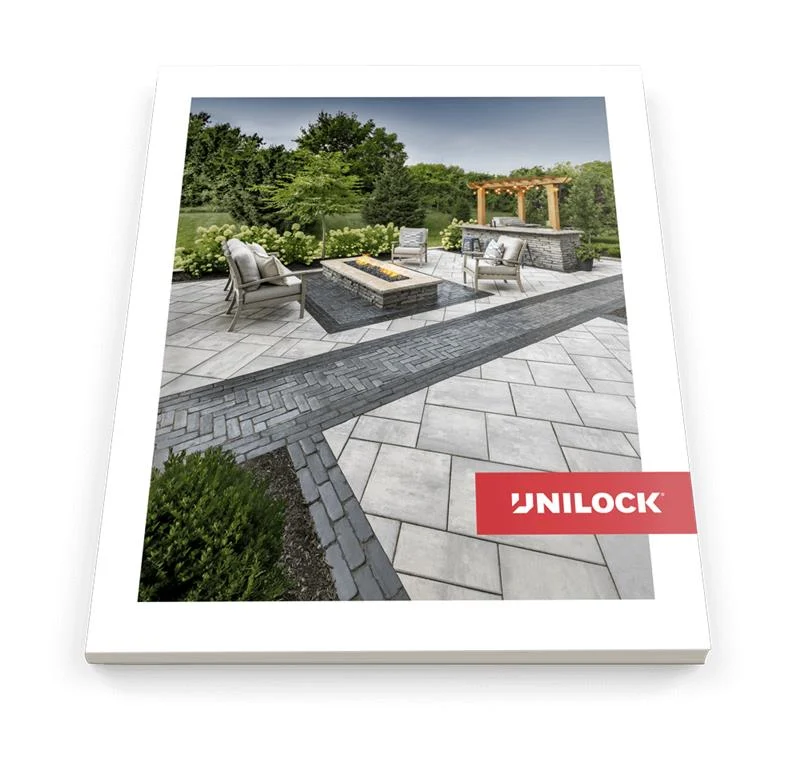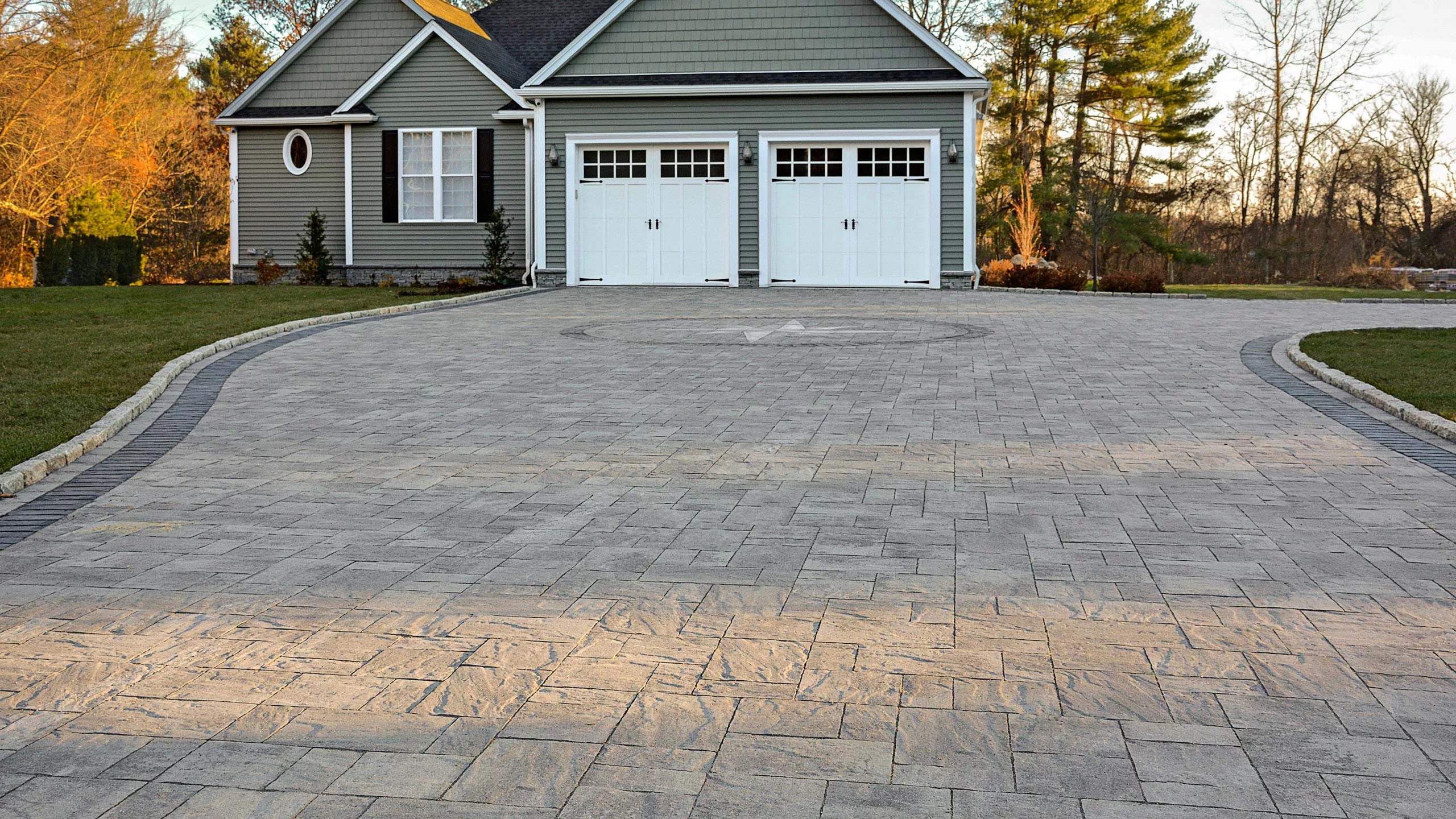You can return any time by using the sub-menu at the top of your screen.
WESTPORT™
The casual look of Westport is achieved with a rugged surface and irregular sides. Sizes within the 3-stone random bundle for Westport are smaller than Beacon Hill but the ratios are the same, which makes a variety of patterning options possible for patios, walkways or driveways.
WESTPORT™
The casual look of Westport is achieved with a rugged surface and irregular sides. Sizes within the 3-stone random bundle for Westport are smaller than Beacon Hill but the ratios are the same, which makes a variety of patterning options possible for patios, walkways or driveways.
Colors
Applications
Shape and size

127mm x 254mm x 70mm
5" x 10" x 2 3/4"

127mm x 254mm x 70mm
5" x 10" x 2 3/4"

127mm x 254mm x 70mm
5" x 10" x 2 3/4"

127mm x 254mm x 70mm
5" x 10" x 2 3/4"

254mm x 380mm x 70mm
10" x 15" x 2 3/4"

127mm x 254mm x 70mm
5" x 10" x 2 3/4"

254mm x 254mm x 70mm
10" x 10" x 2 3/4"

254mm x 380mm x 70mm
10" x 15" x 2 3/4"

254mm x 254mm x 70mm
10" x 10" x 2 3/4"

127mm x 254mm x 70mm
5" x 10" x 2 3/4"

254mm x 380mm x 70mm
10" x 15" x 2 3/4"

127mm x 254mm x 70mm
5" x 10" x 2 3/4"

254mm x 254mm x 70mm
10" x 10" x 2 3/4"


The refined surface of Unilock EnduraColor products is achieved with a two step manufacturing process that combines a base of coarser aggregates for a stronger foundation, with concentrated color and wear-resistant finer aggregates on top. This process protects the surface from the appearance of fading over time because the top layer prevents large, lighter color aggregates from ever showing through.

EasyClean ™
Unlike after-market sealers which merely coat the top, EasyClean goes beyond the surface and becomes integral to the product during manufacturing. The result is enhanced surface color and protection from stains.


A special finishing process creates Unilock Comfort Step, an ultra-smooth and silky surface texture that feels three times better on bare feet than traditional pavers*. These pavers feature a remarkably tight surface appearance, creating a unique sensory experience that is velvety-smooth. *based on consumer research

Westport™ The classic appeal of multiple shapes makes Westport an all-time favorite. Gentle surface clefts and clean edges give Westport an elegant and relaxed look. The varying rectilinear stone sizes, provide for that classic flagstone appearance that is compatible for both traditional and modern landscapes. Recommended Base Stabilization – one layer of DriveGrid™" stabilization grid between subgrade and base material. Recommended depth 8” to 10” below pavers for maximum stability and performance. Use under Standard Base or Permeable Base. Standard Base – Min. 6” – 8” of ¾” Crusher Run gravel (any road base standard in accordance with ASTM-D2940) compacted to 98% Standard Proctor Density (SPD). Standard Bedding Course – 1” thick of coarse sand– in accordance with ASTM-D2940 screeded over base. Alternative Permeable Base – Min. 6” – 8” of ¾“ clear open-graded stone compacted to achieve full particle lock-up and consolidation. (Clear open-graded does not compact but does consolidate slightly by rattling the particles together.) Alternative Permeable Bedding Course – 1” thick of 1/4” clear open-graded chip stone – (ASTM No. 8) screeded over base. Special Note: Concrete Direct Overlay – In some areas of the country and in some applications pavers are very successfully placed directly over concrete. Concrete as a base is in itself quite strong, but it can affect the structural integrity of the paver particularly in vehicular applications, where the concrete below is sub-par. The following considerations must be taken into account to insure that the concrete below the surface is ideal: Jointing Material and Joint Stabilization All sands must meet ASTM C144 or C33 Specifications. For best appearance and optimal performance,, keep jointing materials approximately 1/8” below the chamfer (bevel edge) of the paver. Good Option: Ordinary sharp jointing sand in accordance with ASTM C144 or C33. (Common name: Concrete Sand) Best Option: Any polymeric sand or ordinary concrete sand stabilized by a water-based or solvent-based joint sand stabilizer sealer. Always follow manufacturer’s application specifications and requirements. Handling – This product has no special handling requirements. Edge Restraint - Always install an edge restraint around the perimeter of any paver installation not restrained by building structures. Spike-in edge restraints come in plastic and metal and work well for most applications. A concrete curb or a sub-surface concrete wedge can also be installed to retain the edge. Paver Compaction - Always use a protective polymer pad on the bottom of your compactor when doing the final compaction of the pavers. An alternative is to use a rubber-roller compactor for the final compaction. Cleaners – Any cleaner specifically designed for pavers may be used for color restoration or general cleaning. Follow manufacturer’s dilution rates and application procedures. Always test a small area to make sure the results are as expected. Sealers Jointing Material and Joint Stabilization All sands must meet ASTM C144 or C33 Specifications. For best appearance and optimal performance,, keep jointing materials approximately 1/8” below the chamfer (bevel edge) of the paver. Good Option: Ordinary sharp jointing sand in accordance with ASTM C144 or C33. (Common name: Concrete Sand) Best Option: Any polymeric sand or ordinary concrete sand stabilized by a water-based or solvent-based joint sand stabilizer sealer. Always follow manufacturer’s application specifications and requirements. Handling – This product has no special handling requirements. Edge Restraint - Always install an edge restraint around the perimeter of any paver installation not restrained by building structures. Spike-in edge restraints come in plastic and metal and work well for most applications. A concrete curb or a sub-surface concrete wedge can also be installed to retain the edge. Paver Compaction - Always use a protective polymer pad on the bottom of your compactor when doing the final compaction of the pavers. An alternative is to use a rubber-roller compactor for the final compaction. Cleaners – Any cleaner specifically designed for pavers may be used for color restoration or general cleaning. Follow manufacturer’s dilution rates and application procedures. Always test a small area to make sure the results are as expected. Sealers The Americans with Disabilities Act Accessibility Guidelines (ADAAG) provides measurable criteria to determine compliance, not individual product evaluation. Gaps, joints or openings, greater than ½” horizontal and ¼” vertical should be avoided as they can disrupt wheelchair maneuvering (United States Access Board – Guidelines and Standards).
Random Bundle






